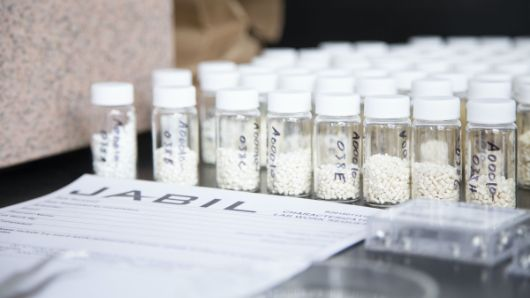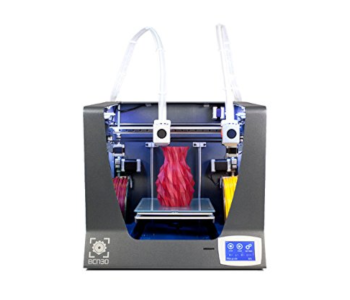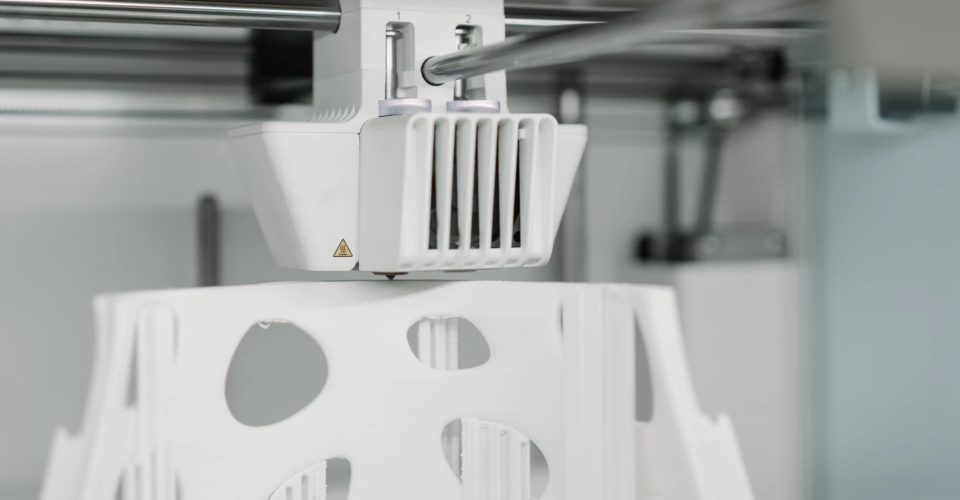Innovative Trends and The Future of 3D Printing
Just about everyone who has even tried 3D printing has used the most common filaments. While printing with ABS, PLA, and PETG is fairly easy, these plastic materials still have a lot of physical and chemical limitations. If 3D printing has any chance of becoming more industrially relevant, 3D printing materials have to evolve to be more robust without losing the ease of use and versatility that has made 3D printing so appealing.
Fortunately, there are already a lot of companies that are on the case. Check out this list of some of the most innovative 3D printing filament materials which may redefine how 3D printing will be used in the future.
Enhanced filaments from Jabil

In 2019, manufacturing giant Jabil launched the Materials Innovation Center, a facility that aims to develop customized materials for different manufacturing methods. The idea is for the company to come up with their own materials for meeting the needs of their customers. So far. they have a portfolio of specialty materials for both additive manufacturing and injection molding.
The Materials Innovation Center has succeeded in developing eight types of specialty 3D printing filaments that are basically improved versions of filament materials we already have in the market. The highlights of their portfolio include:
- The ABS 1400 LW filament, an ABS variant that preserves all the usual benefits of ABS but has reduced warping behavior
- The PA 4035 CA filament, a PA filament with added carbon fiber reinforcement that greatly enhances its strength, toughness, and rigidity
- The TPE SEBS 95A, a slightly more rigid version of TPE filament, ideal for products that need to be flexible but slightly stronger than standard TPE
On top of their filament products, the Materials Innovation Center also has materials for powder-based 3D printing. Of course, these specialty filaments are much more expensive than the usual PLA or ABS spools that you can buy for less than $20. Instead, these filaments are marketed towards industrial 3D printing users and companies.
Realizing the potential of metal 3D printing
Just a few months ago, metal 3D printing company Desktop Metal became a publicly listed company in the NYSE with a total market value of $2.5 billion. This was a bold move for the company, as they intend to use the funds generated from the listing to drive internal growth. If things go as planned, this may be the push that metal 3D printing needs to be more industrially relevant.
Right now, existing technologies for metal 3D printing include filament-based FDM and Binder Jetting. Both of these are still continuously being developed and are still prohibitively expensive, making them impractical for high-volume production. However, metal 3D printing is already being used for low-volume production and prototyping.
The public listing of Desktop Metal in the midst of a global pandemic also highlights one of the more important but less obvious benefits of 3D printing – it significantly simplifies the supply chain for large industries. With 3D printing capabilities, a facility that needs engineering parts no longer needs to source them from manufacturers.
The market for metal 3D printing does not have many players but is very competitive. Desktop Metal is considered an up and coming brand, but companies like ExOne and Stratasys have long made their marks. In terms of market acceptance, the technology isn’t quite there yet. Hopefully, the research and innovation which will be stimulated by the public listing of Desktop Metal will make metal 3D printing much more accessible and, therefore, practical.
High-volume 3D printing will become more economical

Time and again, a benefit of 3D printing that has often been mentioned is that it’s more practical for low-volume production. This is because 3D printing needs no molds or specialized equipment – a single 3D printer can be used for parts of different shapes and sizes.
However, this also limits the potential of 3D printers. Yes, they may be great for limited runs and prototypes, but the real value in the manufacturing world lies in high-volume production. Recent developments in metal and polymer 3D printing technology may just change that.
Two companies are leading the charge in the metal 3D printing front. The X1 160 Pro by ExOne is touted as their largest metal 3D printer ever with a build volume of 160 liters. It also boasts of high printing speeds, material versatility, and cloud connectivity capabilities. This combination of features makes the X1 160 Pro a metal 3D printer that is geared towards rapid high-volume production.
For their part, Desktop Metal has launched the Shop System, an end-to-end metal 3D printing solution made for machine shops. A suite of equipment that can handle printing to sintering, the Shop System includes a single-pass print engine that can print ten times faster than other laser powder bed fusion printers. From the printer, the project can be passed off to a de-powdering station and a furnace for finishing.
The concept of high-volume production is a little more established in the field of polymer-based 3D printing. Back in 2018, 3D Systems pioneered the Align Technology for the Invisalign clear aligners for teeth. Through this partnership, 3D Systems can manufacture 320,000 unique medical devices per day. This huge boost in productivity has been very rewarding for Align, allowing their patient base to grow up to six times since 2009.
In 2019, HP went into a similar partnership with the Smile Direct Club. With 49 HP Direct Jet Fusion 3D printers, this collaboration helped produce 50,000 unique dental molds.
If 3D printing can evolve to become a good fit for high-volume production, then it might truly become a disruptive force in the manufacturing industry. Aside from its versatility, the potential of 3D printing to shorten the supply chain is among one of its strongest characteristics.
Automation of post-processing
Even though the actual 3D printing step can be automated, the consequent step of post-processing still requires a lot of human intervention. This is because post-processing is still a largely manual step that requires considerable skill. This requires a lot of time and manpower, making it impractical for large-scale manufacturing.
UK-based company Additive Manufacturing Technologies (AMT) seeks to address this gap. Through their PostPro3D process, they have used a proprietary chemical vapor bath to smooth the surface of prints made with Nylon, TPU, and ULTEM among around 95 other polymers.
Similar technology is being developed by Germany-based DyeMansion. The new Powerfuse S system is a fully automated closed-loop 3D printing process that has an automatic loading feature and capability for handling batch manufacturing. The tail-end of the process is an automated post-processing step that uses the VaporFuse Surfacing (VFS) technology for creating perfectly smooth surfaces.
In the field of metal 3D printing, automation of post-processing is a lot more complicated because of the requirements of different materials and 3D printing processes. As a testament to this challenge, there is only one company that seems to be rising to the occasion.
Austrian company Hirtenberger Engineered Surfaces had to develop an entirely new process to automate the post-processing of metal 3D printed parts. The process, called Hirtisation, involves three steps that run the gamut for depowdering to polishing. It is supposedly suitable for all metals and alloys commonly used in 3D printing.
Post-processing remains a serious hindrance to the automation and scaling of 3D printing technologies. There aren’t a lot of companies focusing on a solution to this problem right now – after all, even the 3D printing step is yet to be perfected.
“Smarter” 3D printers

Another requirement for the automation of 3D printers is to make them “smart.” This means that they need to have sensors that feedback data, thus creating a closed-loop control system. This is crucial if large-scale 3D printing will reach levels where manual monitoring becomes impossible.
The concept of process control may also eliminate the need for 3D printing operators to troubleshoot minor problems and deviations. The idea is to create a 3D printer that can make automatic corrections for minor deviations. This ensures that repeatable parts can be reproduced at a high rate without the need for constant manual intervention.
Sigma Labs is one of a few companies that are developing sensor packs for 3D printers. The PrintRite3D quality assurance system combines the SENSORPAK multi-sensors with the INSPECT software module to collect and inspect data from the 3D printing process. Using analytics, the system can assess the part quality and quantify the level of precision that any 3D printing process can achieve.
Taking it one step further is Velo3D, a company that developed the Sapphire 3D printer that comes with closed-loop control processing. Central to this technology is the Flow software, which can run simulations of the 3D printing processes to anticipate errors and make the necessary corrections. According to Velo3D, this allows the printer to achieve a first copy success rate of 90%.
3D printing systems will integrate into end-to-end management systems
Still on the topic of automation, some companies have been making strides towards integrating 3D printers into end-to-end management systems for manufacturing facilities. This means making a system that works with more than just the 3D printer – it has to be an ecosystem that incorporates other aspects of production such as orders, inventory, quality control, and fulfillment. If manufacturing facilities ever scale up the use of 3D printing, such a system would be essential.
Despite how this idea makes sense, there have been no significant efforts to incorporate automated 3D printing systems into existing workflow solutions. This probably speaks of just how big the footprint of 3D printing is currently in the context of the entire manufacturing industry.
Unfortunately, 3D printing has not quite made enough of a mark in the manufacturing world to justify the development of such a platform. A true end-to-end management system feels like the final piece of the puzzle. For as long as the technology of 3D printing for automated large-scale production has not yet been perfected, then this step in the development process will probably remain stalled.
Final thoughts
Even though 3D printing technology has spent decades in development, it remains a fairly immature technology. Yes, we have seen a huge rise in the popularity of 3D printers on the desktop scale. However, this democratization of 3D printing technology does not help much in terms of getting large corporations to invest in its research and development. The technology will only fully evolve once it has been deemed as useful in large-scale manufacturing industries.
In this front, there are still a lot of hurdles for 3D printing to clear. Many brands seem to be on the verge of overcoming the material limitations of printing with both polymer and materials, which is a huge first step. The next set of challenges will come with how well 3D printing can be scaled up and how they can be integrated into fully automated manufacturing processes.





